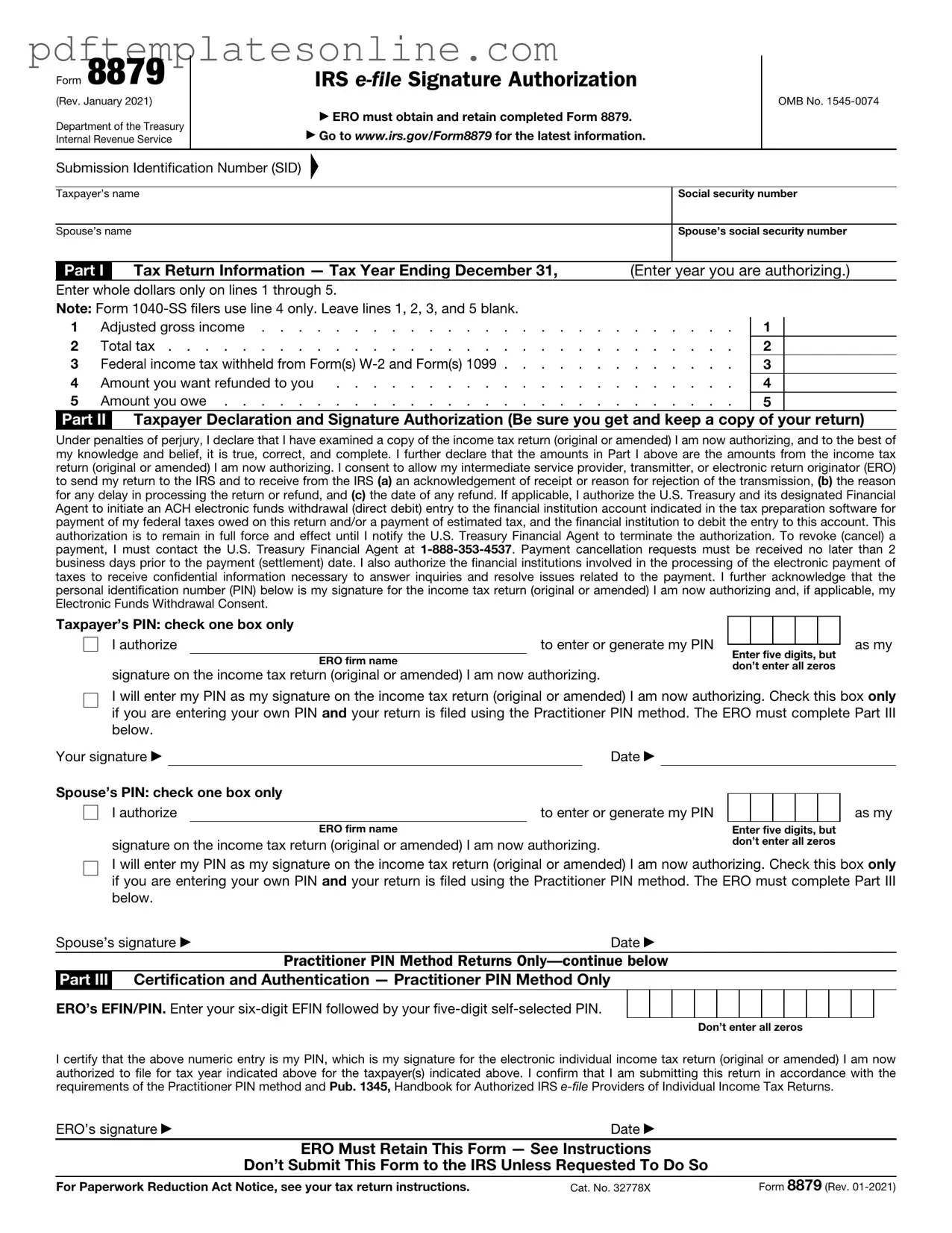Filling out the IRS Form 8879, which authorizes an e-filed tax return, can be straightforward, but many individuals make common mistakes that can lead to delays or complications. Understanding these pitfalls can help ensure a smoother filing process.
One frequent error is incomplete information. Taxpayers often overlook essential details, such as their Social Security number or the tax preparer's information. Every box on the form is there for a reason. Missing even one piece of information can lead to rejection of the e-filed return.
Another common mistake involves incorrect signatures. The form requires signatures from both the taxpayer and the tax preparer. If either signature is missing or not properly executed, the IRS may not accept the return. Always double-check that both parties have signed and dated the form correctly.
Some people mistakenly forget to review the return before signing the 8879. It’s crucial to ensure that the tax return accurately reflects your financial situation. If there are errors in the return, signing the 8879 could mean you are agreeing to incorrect information, which can lead to penalties or audits later on.
Additionally, individuals often use outdated versions of the form. The IRS updates forms periodically, and using an old version can cause complications. Always download the latest version from the official IRS website to avoid any issues.
Another mistake is not keeping a copy of the signed form. After submitting the 8879, it’s essential to retain a copy for your records. This document serves as proof of authorization for the e-filed return and may be needed for future reference or audits.
Finally, some taxpayers overlook deadlines. The 8879 must be submitted in a timely manner to ensure that the e-filed return is processed without delay. Missing the deadline can result in penalties or interest on any taxes owed. Staying organized and aware of important dates is key to a successful filing.
